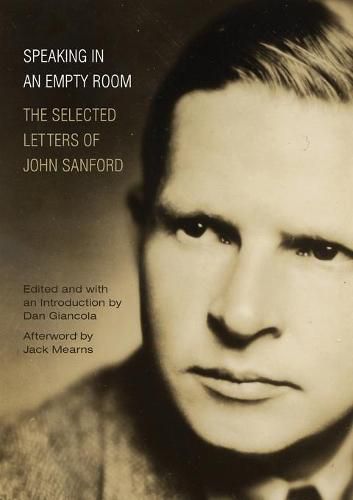Readings Newsletter
Become a Readings Member to make your shopping experience even easier.
Sign in or sign up for free!
You’re not far away from qualifying for FREE standard shipping within Australia
You’ve qualified for FREE standard shipping within Australia
The cart is loading…






This title is printed to order. This book may have been self-published. If so, we cannot guarantee the quality of the content. In the main most books will have gone through the editing process however some may not. We therefore suggest that you be aware of this before ordering this book. If in doubt check either the author or publisher’s details as we are unable to accept any returns unless they are faulty. Please contact us if you have any questions.
This selection from over 70 years of letters, collected and edited by Dan Giancola, helps define John Sanford’s writing life and the ambition that fueled it. The letters chronicle his time spent in Europe during the Great Depression, in writing screenplays during Hollywood’s Golden Age (including work with director Frank Capra scripting World War Two propaganda films), in managing life after having been blacklisted by the House Un-American Activities Committee, and in finding publishers for his 24 books. These letters offer a testament to perseverance and integrity; they show a writer unwilling to accede to publishers’ demands that he alter his sui generis work.
The letters feature walk-ons by T.S. Eliot, James Joyce, Joan Crawford and Franchot Tone, and Jean Muir. Here too are letters to his wife, Marguerite Roberts, Hollywood screenwriter, with whom Sanford shared his uncompromising, indefatigable efforts to publish his books as he envisioned them. Above all, these letters illustrate the life of a writer far removed-both geographically and philosophically-from the east coast publishing elite, a writer battling agents, publishers, and Communist Party pressure trying to tell him how and what to write.
Finally, perhaps most importantly, these letters reveal the jocular and acerbic personality of a writer impatient with fools and shoddy writing but who always made time to praise and advise younger writers, such as Paul Mariani and Per Petterson. This is a book for anyone interested in 20th-century American literature or thinking of becoming a professional writer.
Speaking in an Empty Room contains 222 of Sanford’s letters, an introduction by editor Dan Giancola, and an afterword by Jack Mearns, professor of psychology at California State University, Fullerton, and author of John Sanford: An Annotated Bibliography (Oak Knoll Press, 2008).
$9.00 standard shipping within Australia
FREE standard shipping within Australia for orders over $100.00
Express & International shipping calculated at checkout
This title is printed to order. This book may have been self-published. If so, we cannot guarantee the quality of the content. In the main most books will have gone through the editing process however some may not. We therefore suggest that you be aware of this before ordering this book. If in doubt check either the author or publisher’s details as we are unable to accept any returns unless they are faulty. Please contact us if you have any questions.
This selection from over 70 years of letters, collected and edited by Dan Giancola, helps define John Sanford’s writing life and the ambition that fueled it. The letters chronicle his time spent in Europe during the Great Depression, in writing screenplays during Hollywood’s Golden Age (including work with director Frank Capra scripting World War Two propaganda films), in managing life after having been blacklisted by the House Un-American Activities Committee, and in finding publishers for his 24 books. These letters offer a testament to perseverance and integrity; they show a writer unwilling to accede to publishers’ demands that he alter his sui generis work.
The letters feature walk-ons by T.S. Eliot, James Joyce, Joan Crawford and Franchot Tone, and Jean Muir. Here too are letters to his wife, Marguerite Roberts, Hollywood screenwriter, with whom Sanford shared his uncompromising, indefatigable efforts to publish his books as he envisioned them. Above all, these letters illustrate the life of a writer far removed-both geographically and philosophically-from the east coast publishing elite, a writer battling agents, publishers, and Communist Party pressure trying to tell him how and what to write.
Finally, perhaps most importantly, these letters reveal the jocular and acerbic personality of a writer impatient with fools and shoddy writing but who always made time to praise and advise younger writers, such as Paul Mariani and Per Petterson. This is a book for anyone interested in 20th-century American literature or thinking of becoming a professional writer.
Speaking in an Empty Room contains 222 of Sanford’s letters, an introduction by editor Dan Giancola, and an afterword by Jack Mearns, professor of psychology at California State University, Fullerton, and author of John Sanford: An Annotated Bibliography (Oak Knoll Press, 2008).